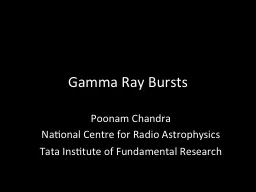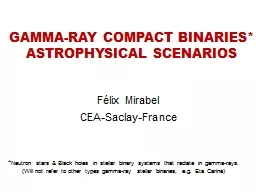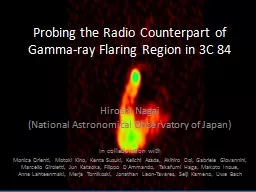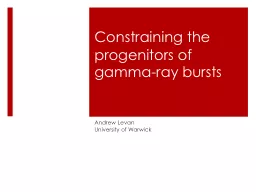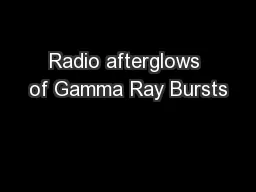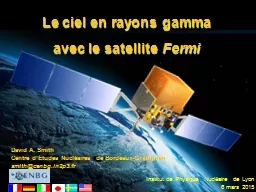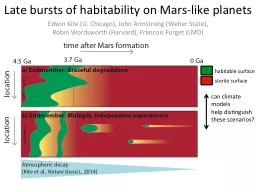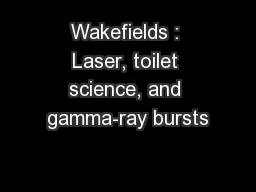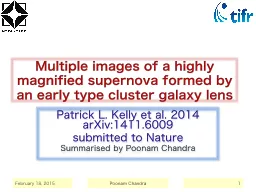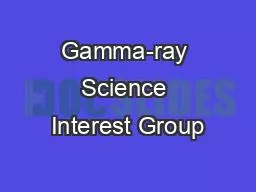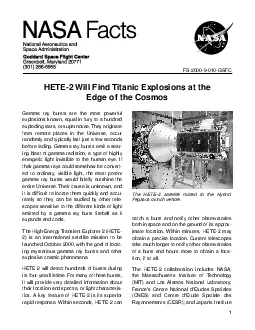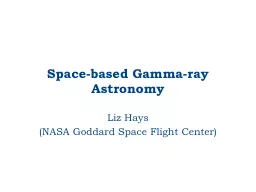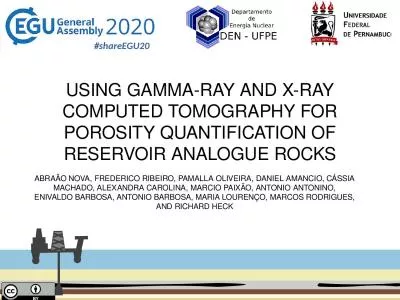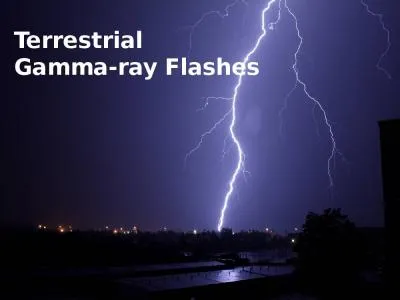PPT-Gamma Ray Bursts Poonam Chandra
Author : josephine | Published Date : 2022-06-28
National Centre for Radio Astrophysics Tata Institute of Fundamental Research Poonam Chandra What are Gamma Ray bursts GRBs Most energetic events in the universe
Presentation Embed Code
Download Presentation
Download Presentation The PPT/PDF document "Gamma Ray Bursts Poonam Chandra" is the property of its rightful owner. Permission is granted to download and print the materials on this website for personal, non-commercial use only, and to display it on your personal computer provided you do not modify the materials and that you retain all copyright notices contained in the materials. By downloading content from our website, you accept the terms of this agreement.
Gamma Ray Bursts Poonam Chandra: Transcript
Download Rules Of Document
"Gamma Ray Bursts Poonam Chandra"The content belongs to its owner. You may download and print it for personal use, without modification, and keep all copyright notices. By downloading, you agree to these terms.
Related Documents

